Overview of Grassroots Organizing around Community Schools:
It was difficult to find 10 truly grassroot organizations advocating for Community Schools, so mixed in are some organizations that are addressing a specific health service instead of providing full health and wellness services. I found also that there are some bigger organizations like The Children’s Aid Society, The Center for Popular Democracy, and the National Center for Community Schools that use there political pull and strength to help local communities launch their own Community Schools. The support from these bigger organizations is centered around the needs of specific need of local communities, which maintain the grassroots foundation of change. People seem excited about the promise of Community Schools and the services they provide because they capture and combat the multifaceted issues that underserved, urban communities face.
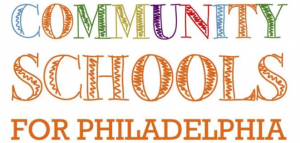 Community Schools For Philadelphia is a project launched by Philadelphia Coalition Advocating for Public Schools (PCAPS). Community Schools, as defined by this group, call for transparency in governance, promotion of community culturally relevant curriculum, access to needed heath and wellness services services, a new way to measure success of students that takes in more than just test scores and graduation statistics, and mutual respect between every student, teacher, administrator and professional offering services.
Community Schools For Philadelphia is a project launched by Philadelphia Coalition Advocating for Public Schools (PCAPS). Community Schools, as defined by this group, call for transparency in governance, promotion of community culturally relevant curriculum, access to needed heath and wellness services services, a new way to measure success of students that takes in more than just test scores and graduation statistics, and mutual respect between every student, teacher, administrator and professional offering services.
CHECK THIS OUT! In July of 2016, Community Schools of Philadelphia announced where the first 9 Community schools will be.

SAVE, or School Advocates for Vision and Education has partnered with the Southern College of Optometry to provide comprehensive eye checks to underserved communities, schools, and children. SCO has a mobile eye van (MobilEYES Clinic) with state of the art technology to bring the optometrist to the people, either schools or other venues.
Check out SCO MobilEYES twitter for up to date info on SAVE’s work.
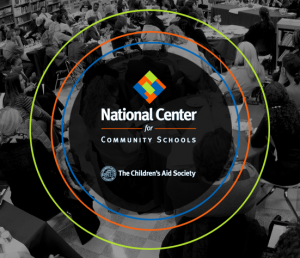 While this is not a grassroots organization itself, its fight for Community schools embodies the core beliefs of grassroots organizing by engaging the community in a meaningful way. The National Center for Community Schools advocates for and offers aid to communities to help them establish Community schools in their district. Children’s Aid created NCCS as a response to increased need for information on how to implement local Community schools. They are also one of three founders of the Coalition for Community schools (click here to see how they have worked on the local level of communities), which works in a similar way to unite schools, communities, and families to give a well-rounded approach to education (including health services and community support).
While this is not a grassroots organization itself, its fight for Community schools embodies the core beliefs of grassroots organizing by engaging the community in a meaningful way. The National Center for Community Schools advocates for and offers aid to communities to help them establish Community schools in their district. Children’s Aid created NCCS as a response to increased need for information on how to implement local Community schools. They are also one of three founders of the Coalition for Community schools (click here to see how they have worked on the local level of communities), which works in a similar way to unite schools, communities, and families to give a well-rounded approach to education (including health services and community support).
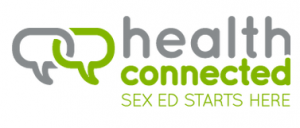
Health Connected started as a grassroots organization called The South County Teen Pregnancy Task Force, which was assembled by local teachers and administrators of the Redwood City School District and Sequoia Union High School District. It grew into a program that helps teachers and parents talk to kids about sexuality and sex safety. This organization includes a Youth Advisory Board that meets twice a month “to organize outreach events, produce educational videos and other social media content, and provide feedback on Health Connected’s Youth Services activities.”
 The Children’s Aid Society is based in New York City. Their collaboration with community groups is integral to the work that they do. Their philosophy is very grassroots and they take input from local communities to see what they need to help them most. They do a lot regarding public health resources in schools. They try to make heath and wellness care accessible to school children and their families and their surrounding communities with School Based Health Centers.
The Children’s Aid Society is based in New York City. Their collaboration with community groups is integral to the work that they do. Their philosophy is very grassroots and they take input from local communities to see what they need to help them most. They do a lot regarding public health resources in schools. They try to make heath and wellness care accessible to school children and their families and their surrounding communities with School Based Health Centers.
The NYC C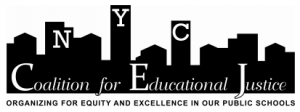 oalition for Educational Justice has been working on establishing Community Schools in New York City. These Community schools have the goal of getting student to graduate and go to college but they also promise to have comprehensive mental and physical health services, because a student will struggle to succeed without these basic needs met. They are woking with Mayor Bill de Blasio to start 100 Community schools in areas where they are most needed.
oalition for Educational Justice has been working on establishing Community Schools in New York City. These Community schools have the goal of getting student to graduate and go to college but they also promise to have comprehensive mental and physical health services, because a student will struggle to succeed without these basic needs met. They are woking with Mayor Bill de Blasio to start 100 Community schools in areas where they are most needed.
Check out their TWITTER for recent updates.
This next exa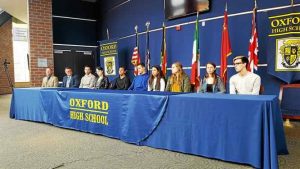 mple of public health in schools is not so much an organization but a student led initiative. In response to the problematic, yet popular show on Netflix “13 Reasons Why” a group of students from Oxford High School in Oakland, MI are speaking out about mental health and their own experience with depression and suicidal thoughts. For 13 days students are sharing their stories over the loudspeaker and then giving a reason “why not.” Read more here and here.
mple of public health in schools is not so much an organization but a student led initiative. In response to the problematic, yet popular show on Netflix “13 Reasons Why” a group of students from Oxford High School in Oakland, MI are speaking out about mental health and their own experience with depression and suicidal thoughts. For 13 days students are sharing their stories over the loudspeaker and then giving a reason “why not.” Read more here and here.
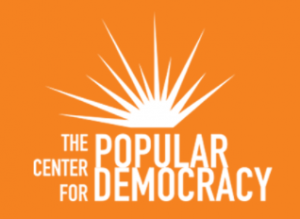 The Center For Popular Democracy works with many local groups to work for the community and its needs. One of its current campaigns is advocacy for Community schools. Some of the aspects that they are working towards with these types of schools are “wrap-around services for students and families, such as counseling, health, dental, eye care, GED classes, community gardens, early childhood centers and others, as needed.”
The Center For Popular Democracy works with many local groups to work for the community and its needs. One of its current campaigns is advocacy for Community schools. Some of the aspects that they are working towards with these types of schools are “wrap-around services for students and families, such as counseling, health, dental, eye care, GED classes, community gardens, early childhood centers and others, as needed.”
Also check out this publication from The Center For Popular Democracy which outlines what Community schools are, includes specific examples of Community schools and how they work, and helps parents and organizing groups launch their own Community Schools.
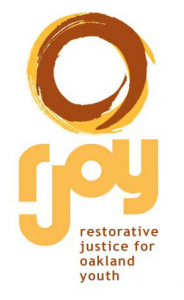 Restorative Justice for Oakland Schools is a organization that trains professional facilitators of and advocates for restorative justice in schools, which works to address the emotional harm (violence and incarceration) that inequalities produce in a society. In 2010, the Oakland Unified School District Board of Directors switched to a system of restorative justice, replacing zero tolerance discipline. Healthier schools with lower dropout and incarceration rates were the result.
Restorative Justice for Oakland Schools is a organization that trains professional facilitators of and advocates for restorative justice in schools, which works to address the emotional harm (violence and incarceration) that inequalities produce in a society. In 2010, the Oakland Unified School District Board of Directors switched to a system of restorative justice, replacing zero tolerance discipline. Healthier schools with lower dropout and incarceration rates were the result.
Check out this video to see how an a example of a Community Building Circle works:
Maryland C ommunities United is a grassroots organization that fights for many different social justice issues surrounding schools. In 2014, they were part of a campaign for Community Schools in Baltimore. They organized rallies and petitions to create schools that served the whole student and the whole community.
ommunities United is a grassroots organization that fights for many different social justice issues surrounding schools. In 2014, they were part of a campaign for Community Schools in Baltimore. They organized rallies and petitions to create schools that served the whole student and the whole community.
